Improved Interior Coatings Using Spray Guns
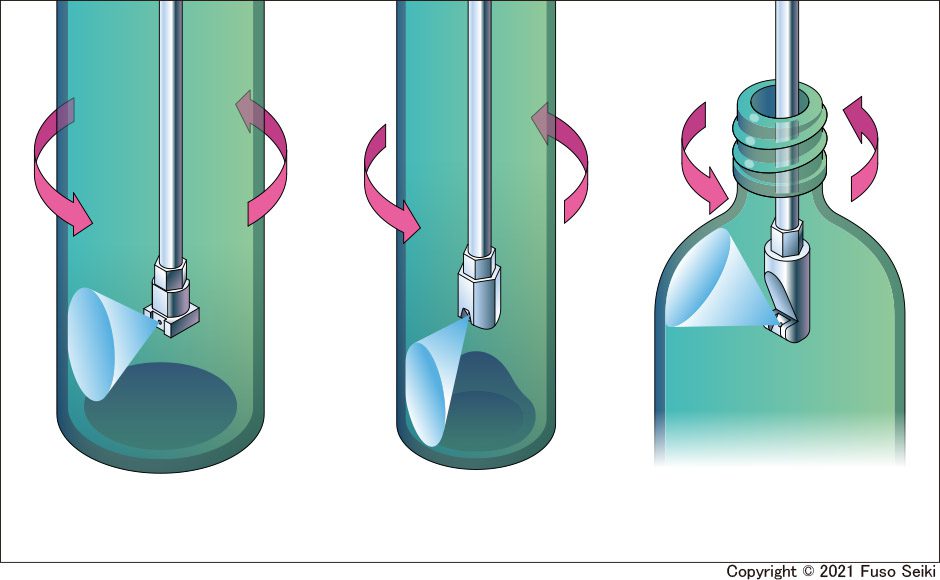
Many users have difficulties applying internal coatings in small spaces. An effective solution to this issue is to use of a long nozzle with a small head. This column will explain the types of equipment available in this situation and their use.
Using Spray Guns with Long Nozzles for Narrow Openings
It can be difficult to coat the inner surfaces of bottles and cosmetic containers if the opening is too small to insert a spray gun. Spray guns with long nozzles are an effective solution to this problem. Lumina’s C8 series have angled heads ranging from 7 to 9 mm in size, enabling them to pass through openings with a minimum diameter of 13 mm.
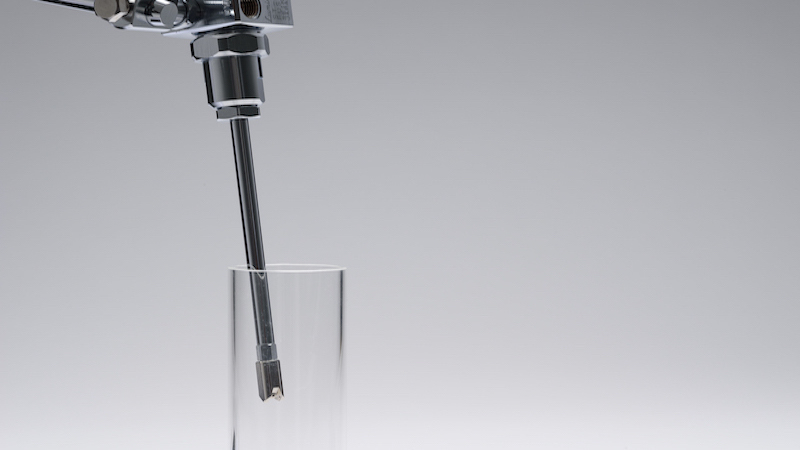

Available spray angles include 90 degrees horizontal, 45 degrees diagonal, and 120 degrees diagonal and angled upwards. 90-degree horizontal heads are widely used for internal coating. When slowly inserted/removed from a workpiece attached to a spindle device, they provide clean coatings of inner surfaces.

Why Diagonal 45-Degree Spraying is Best for Narrow Spaces
For smaller workpieces, horizontal 90-degree heads may spray too closely against the workpiece’s inner walls, causing splashback. A 45-degree diagonally-angled head is effective in these situations. These heads provide a greater spray distance from the workpiece’s inner surface than when spraying horizontally, allowing for better adherence (see center illustration).
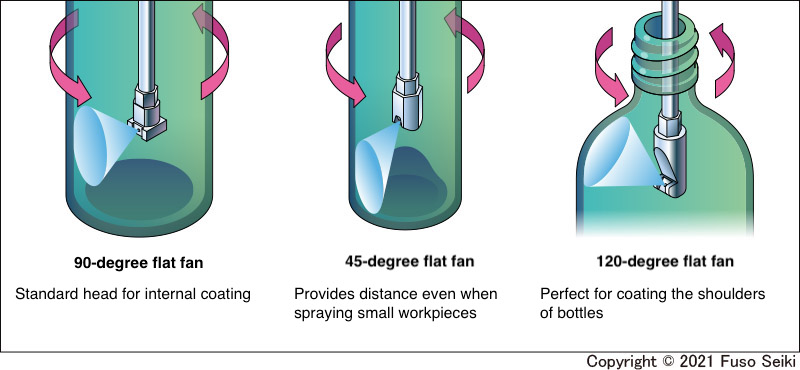
Additionally, when working with containers with raised bottom surfaces, a 90-degree head will not be able to spray into the corners. In this situation a front-facing head that is angled 45 degrees can be used.
The Ideal Angle for Coating Bottle Shoulders
When coating the internals of bottles, the most challenging part is the shoulders. 90-degree heads only provide a shallow angle, creating splashback and providing an insufficient coating. 120-degree heads allow for the shoulders to be sprayed face-on, ensuring the coating is applied properly.
Some users find that 120-degree heads solve the shoulder problem but leave other surfaces partially uncoated. In this situation, you may need to use two or three different nozzles to coat all of the internal surfaces. Users also frequently ask us whether nozzles require maintenance. This depends on the fluid used, but as a rule, all nozzles need to be cleaned. Since C8 heads are small and easily clogged, they should be cleaned frequently through immersion in cleaning solution.
The Optimal Nozzle Depends on the Object’s Diameter
In addition to the C8 series, Lumina sells various other long nozzles that can be used for coating internal surfaces. For example, spiral pattern nozzles such as the φ4.6 spiral and brass tube spiral. The helical airflow’s centrifugal force spreads the mist outward, resulting in a wide spray angle of 20 to 25 degrees. This spread helps coat the inner walls of the workpiece. This type of nozzle also doesn’t require the workpiece to be rotated. We also have ultra-fine needle nozzles with diameters of 2 mm for workpieces 7 mm or less in diameter. The ideal model will depend on the diameter of the workpiece.
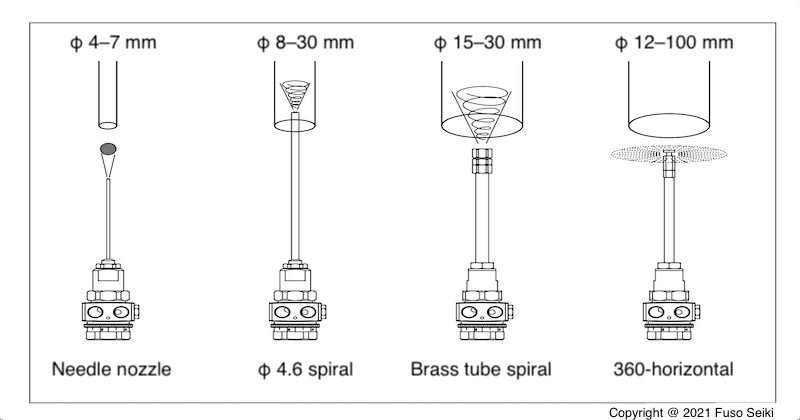

Coating Folded-Back Sections of Metal Frames Using Hand Guns
We also offer handheld spray guns with long nozzles. When using a handgun to work with H-shaped or U-shaped steel pieces, or hook-shaped frames, it can be difficult to know how to coat folded-back sections. As shown in the illustration below (left), adding a 90-degree horizontal spray head to the end of the long nozzle makes it easier to coat these difficult areas.
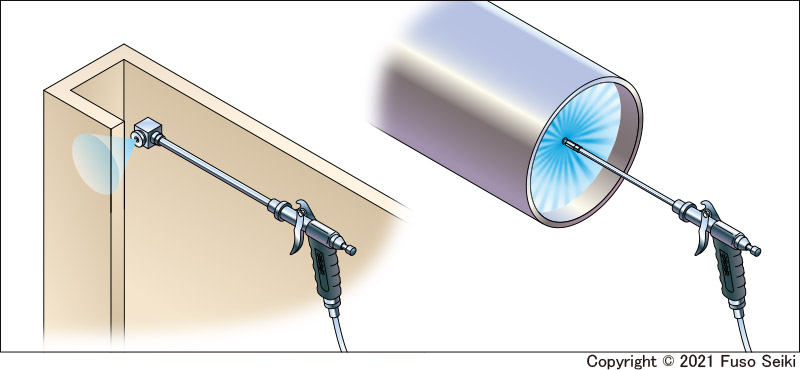

When coating the insides of pipes with relatively large diameters, a handgun with a 360-degree head that opens in all directions can be used (right). Various types and lengths of jet pipes are available. For long pieces, the jet pipe can be lengthened to coat deeper surfaces.
Spray guns with long nozzles consist of three parts: the body, the jet pipe, and the head. Each requires that the correct type is selected. Type suitability depends on the size and shape of the workpiece and the liquid being used. Please contact us if you require more information.

